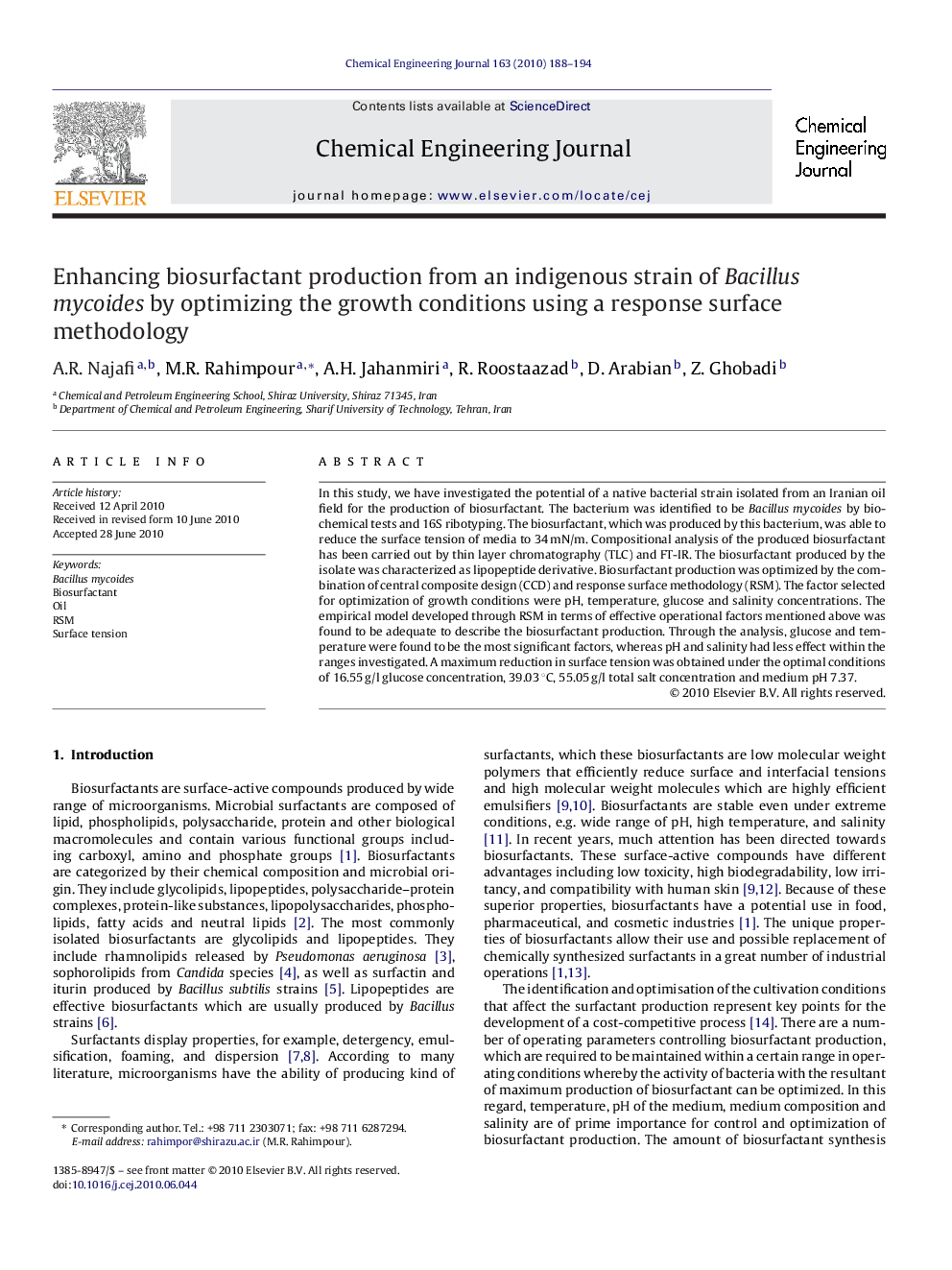| Article ID | Journal | Published Year | Pages | File Type |
|---|---|---|---|---|
| 151956 | Chemical Engineering Journal | 2010 | 7 Pages |
In this study, we have investigated the potential of a native bacterial strain isolated from an Iranian oil field for the production of biosurfactant. The bacterium was identified to be Bacillus mycoides by biochemical tests and 16S ribotyping. The biosurfactant, which was produced by this bacterium, was able to reduce the surface tension of media to 34 mN/m. Compositional analysis of the produced biosurfactant has been carried out by thin layer chromatography (TLC) and FT-IR. The biosurfactant produced by the isolate was characterized as lipopeptide derivative. Biosurfactant production was optimized by the combination of central composite design (CCD) and response surface methodology (RSM). The factor selected for optimization of growth conditions were pH, temperature, glucose and salinity concentrations. The empirical model developed through RSM in terms of effective operational factors mentioned above was found to be adequate to describe the biosurfactant production. Through the analysis, glucose and temperature were found to be the most significant factors, whereas pH and salinity had less effect within the ranges investigated. A maximum reduction in surface tension was obtained under the optimal conditions of 16.55 g/l glucose concentration, 39.03 °C, 55.05 g/l total salt concentration and medium pH 7.37.
